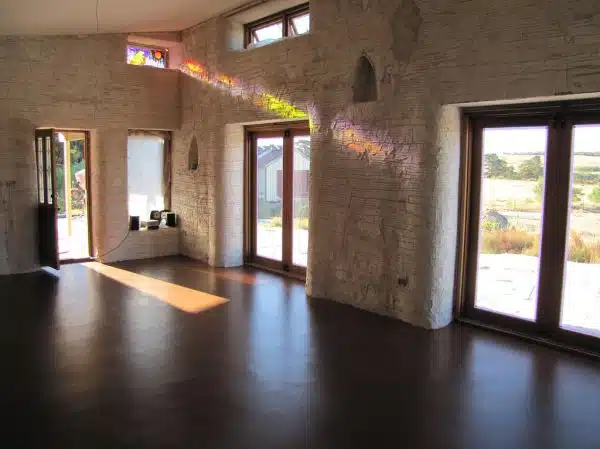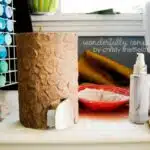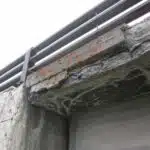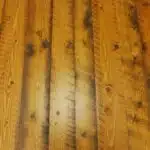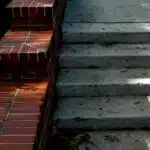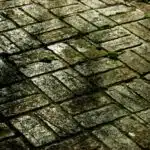Concrete floors and patios are a popular choice among homeowners due to their durability, low maintenance, and versatility. However, plain concrete can be unsightly and lack character. One way to enhance the appearance of your concrete surfaces is by staining them. Staining can add depth and color to your floors and patios, giving them a unique look that reflects your personal style.
As a concrete staining expert, I have seen firsthand the transformation that staining can bring to a space. It’s important to know the right techniques and products to use for best results. In this article, I will provide step-by-step instructions on how to stain concrete floors and patios, as well as tips on how to properly prepare the surface for staining. Whether you’re looking to update your outdoor living space or add some personality to your indoor floors, this guide will help you achieve stunning results.
Benefits Of Staining Concrete Surfaces
As a concrete staining expert, I have seen firsthand the advantages and disadvantages of staining concrete surfaces. One advantage is the aesthetic appeal that stained concrete brings to any space. Staining can transform dull, gray concrete into a work of art with rich colors and unique patterns. Additionally, stained concrete is incredibly durable and resistant to wear and tear, making it an ideal option for high traffic areas. It also requires minimal maintenance compared to other flooring options.
However, there are also some disadvantages to consider when deciding whether or not to stain your concrete surface. One disadvantage is that stains can be difficult to remove once they have set in, so it’s important to choose the right stain for your project. Additionally, if you’re looking for a uniform color throughout your space, staining may not be the best option as the final result may be uneven due to differences in the original color of the concrete.
Despite these potential drawbacks, staining remains a popular choice for many homeowners due to its numerous benefits. If you’re considering staining your concrete floor or patio, it’s important to weigh these advantages and disadvantages carefully before making a decision. In the next section, we will discuss how to choose the right stain for your project based on your specific needs and preferences.
Choosing The Right Stain For Your Project
- When it comes to choosing the right stain for your project, there are a variety of types of concrete stains to choose from, including acid-based stains, water-based stains, and solvent-based stains.
- Acid-based stains are generally used to create a more natural stone-like look, while water-based and solvent-based stains are better for achieving more vivid and vibrant colors.
- Popular concrete stain colors range from earth tones and warm shades, to bold and bright hues.
- When selecting a stain for your project, it is important to consider the desired look and feel of your concrete floor or patio, as well as the level of maintenance required for the type of stain you choose.
Types Of Concrete Stains
When it comes to staining concrete floors and patios, choosing the right stain is crucial in achieving the desired look for your project. There are two main types of concrete stains: acid-based and water-based stains. Acid-based stains are known for their ability to create a marbled or variegated effect on the surface of the concrete, while water-based stains offer a wider range of color options and tend to be more environmentally friendly.
Pros of acid-based stains include their ability to produce unique and natural-looking color variations, as well as their durability and resistance to fading. However, there are also cons to using acid-based stains such as their harsh chemical makeup, potential health hazards during application and their relatively limited color options compared to water-based stains. Water-based stains, on the other hand, offer a wide range of color options and are easier to apply than acid-based stains. They also tend to be more environmentally friendly due to their lower VOC content.
In deciding which type of stain to use for your project, it is important to consider factors such as desired color options, budget, environmental concerns, level of expertise needed for application, and overall aesthetic goals. By weighing the pros and cons of both types of stains carefully, you can choose the right option that will help you achieve your desired look while also meeting your practical needs.
Stain Colors
After determining the type of stain to be used, the next step is to consider the stain color options. The color of the stain can greatly affect the overall look and feel of your concrete surface. There are various colors available for both water-based and acid-based stains, including earth tones, pastels, vibrant hues, and even metallic finishes.
When choosing a stain color, it is essential to consider the existing elements surrounding your project area such as furniture, fixtures, wall colors or other decorative features that might complement or contrast with the chosen color. Color matching techniques can also be utilized to ensure that the chosen color matches well with these elements. For example, complementary colors can be used to create an eye-catching contrast while analogous colors create a harmonious palette.
In selecting a stain color option that best suits your needs and preferences, it is important to test it on a small area first before applying it to the entire surface. This will give you a better idea of how the final result will look like and help you make necessary adjustments before proceeding with the full application. By considering all these factors carefully when choosing your stain color option, you can achieve a beautiful and long-lasting finish that perfectly complements your space’s overall aesthetic style and design.
Preparing The Surface For Staining
After selecting the right stain for your concrete floors and patios, the next crucial step is preparing the surface for staining. Proper surface preparation is essential to ensure a beautiful and long-lasting finish. Before starting, it is important to note that not all concrete surfaces are suitable for staining. The surface must be clean, free of any coatings or sealers, and have no major cracks or damage.
Surface preparation involves cleaning and profiling the concrete surface to allow proper penetration of the stain. Start by removing any existing coatings or sealers using a chemical stripper or mechanical means such as grinding or sandblasting. Next, thoroughly clean the surface with a pressure washer and an appropriate cleaner/degreaser to remove any dirt, oil, grease, or other contaminants. It is important to let the surface dry completely before proceeding with the staining process.
Once the surface is clean and dry, it is time to profile it to allow proper adhesion of the stain. This can be achieved by using either mechanical means such as shot blasting or acid etching. Shot blasting involves propelling steel shot at high velocity onto the surface, which removes any laitance (weak layer) on top of the concrete, exposing fresh concrete for better adhesion. Acid etching involves using an acid solution to remove a thin layer from the surface of the concrete to create a porous profile that allows for better penetration of the stain. Necessary equipment includes protective gear such as gloves and goggles when working with chemicals like acid etchers.
Transitioning into cleaning and repairing cracks: To achieve optimal results when staining your concrete floors and patios, it’s imperative that you inspect them closely for any cracks or damages before you start applying your stain. Cleaning up these areas adequately will help in achieving better results in your project.
Cleaning And Repairing Cracks
Repairing and cleaning are essential steps to take before staining your concrete floors or patios. To ensure a smooth finish and even color distribution, it is crucial to repair any cracks or damages on the surface. There are different repairing techniques available depending on the extent of damage. For minor cracks, you can use liquid crack filler or epoxy injection. On the other hand, for more severe damage, you may need to remove and replace the affected area.
Cleaning your concrete surface is also vital in preparing it for staining. The first step is sweeping or vacuuming the area to remove any debris or loose dirt. Next, use a pressure washer with a concrete-specific cleaner to deep clean the surface thoroughly. Allow the surface to dry completely before proceeding with staining.
It is important to note that repairing and cleaning may not always guarantee perfect results when staining your concrete floor or patio. Therefore, testing the stain on a small area will help you assess how well it adheres and absorbs into the surface. This will also give you an idea of how many coats of stain you may need to achieve your desired look and ensure that you’re satisfied with the end result before applying it to the entire surface.
Testing The Stain On A Small Area
Picture this: You have spent countless hours and dollars to create the perfect concrete floor or patio, and now it’s time to stain it. However, before you start applying the stain all over, it’s crucial to take some precautions. One of them is testing the stain on a small area first.
Testing the stain on a small area will help you determine if the color selection matches your preference and if there are any adverse reactions. Here are some bullet points to guide you through the process of testing the stain on a small area:
- Clean the surface thoroughly
- Apply a small amount of stain in an inconspicuous spot
- Let it dry for 24 hours
- Observe how it looks during different times of day
- Check for any unwanted reactions such as bubbling or discoloration
Remember that staining concrete is not an exact science, so be prepared to make adjustments along the way. By applying precautions like testing the stain on a small area, you can avoid costly mistakes and achieve your desired outcome.
Now that you have tested the stain on a small area, and you’re confident in your color selection, it’s time to apply it to your entire concrete surface. But how do you go about doing that? Stay tuned for our next section where we’ll discuss step-by-step instructions for applying the stain.
Applying The Stain
Tools needed for applying concrete stain include a pump sprayer, rollers, brushes, and a squeegee. Before starting the application process, ensure that the surface is clean and free of any debris or contaminants. Begin by testing a small area to determine the desired color and level of saturation. Once you have determined the right combination of color and saturation, apply the stain in thin coats using either a sprayer or roller.
Techniques for even application involve working in sections to avoid overlap marks. Start at one end of the surface and work towards the other while maintaining an even pace. Apply the stain with long strokes, moving from one end of the section to another while ensuring that every inch is covered evenly. Use a brush or squeegee to blend any areas where excess stain has accumulated.
To achieve maximum results with your staining project, refer to the table below for recommended drying times and number of coats based on your desired result:
| Desired Result | Number of Coats | Drying Time |
|---|---|---|
| Light Saturation | 1 Coat | 4-6 Hours |
| Medium Saturation | 2 Coats | Overnight |
| Heavy Saturation | 3 Coats+ | 24 Hours |
Using acid stains requires additional safety precautions such as wearing protective clothing and eyewear due to their corrosive nature. It is also important to test an inconspicuous area before proceeding with full-scale applications. Once you have completed this step, follow similar techniques as described above but be mindful of potential fumes that may require ventilation during application.
Using Acid Stains
After applying the stain, it is important to give it ample time to dry before proceeding with the next step. Acid stain application requires patience, as the color develops gradually over time. The longer the stain sits on the concrete, the deeper and richer the color will become. It is recommended that you wait at least 24 hours before applying a sealer.
When selecting colors for your acid stain, keep in mind that the final result can vary depending on factors such as surface conditions, previous treatments, and natural variations in concrete. It is always best to test a small area first before committing to a large project. Acid stains typically come in earthy tones such as browns, greens, and blues. They are also available in more vibrant hues like reds and oranges.
Using acid stains can be an effective way to achieve a unique look for your concrete floors and patios. However, if you prefer a broader range of colors or want more control over the final result, water-based stains may be a better option for you. In the next section, we will explore how water-based stains work and provide some tips for using them effectively.
Using Water-Based Stains
Water-based stains are an excellent option for those who want to achieve a natural, muted look on their concrete floors and patios. Unlike acid-based stains, water-based stains do not react with the concrete’s surface, but rather penetrate it to create a lasting color that won’t fade or peel over time. Additionally, water-based stains offer a range of colors that can be mixed and matched to create custom hues.
One of the most significant benefits of water-based stains is their durability. Due to their ability to penetrate deep into the concrete surface, they are less likely to chip or wear away over time. This makes them an ideal choice for high-traffic areas such as driveways or commercial spaces. Furthermore, because they do not contain harsh chemicals like acid-based stains, they are better for the environment and safer for DIY enthusiasts to use.
When deciding between water-based and acid stain options, it’s important to consider your desired outcome carefully. While both types of stains have their own unique advantages, water-based stains tend to be more forgiving when it comes to application techniques. They also tend to produce more consistent results than acid-based options. Ultimately, choosing which type of stain is right for you will depend on your individual preferences and needs.
To achieve a mottled look with water-based stains, there are several techniques you can use such as layering colors or using specialized tools like brushes or sponges. These methods can help create depth and dimension in your stained concrete surfaces while adding visual interest. With careful planning and execution, achieving a mottled effect with water-based stains can transform any plain concrete floor or patio into a work of art that will last for years to come.
Achieving A Mottled Look
Water-based stains are becoming increasingly popular for concrete staining projects due to their environmentally friendly nature and ease of use. According to a recent industry survey, over 60% of concrete staining professionals now prefer water-based stains over traditional acid-based stains. One benefit of using water-based stains is that they allow for greater control when creating a mottled look.
Mottled look techniques involve layering different colors of stain to create the appearance of natural variations in the concrete. To achieve depth, it is important to apply lighter colors first and then gradually build up darker shades. This layering effect can be achieved by using brushes or sponges to apply the stain in a random pattern.
To further enhance the mottled look, consider adding texture to the surface by using techniques such as sandblasting or engraving. These methods create subtle variations in the surface that will add interest and dimension to your finished project. With a little patience and attention to detail, you can create a stunning mottled concrete floor or patio that will impress everyone who sees it.
When it comes to creating patterns with stencils, there are endless possibilities for customization. By using stencils, you can add intricate designs or logos to your concrete surface that will make it truly one-of-a-kind. To begin, choose your stencil design and secure it tightly onto your clean and dry concrete surface. Then, use a roller or spray gun to apply your chosen stain color within the stencil boundaries. Once dry, remove the stencil carefully to reveal your beautiful new patterned surface. Remember to always seal your stained concrete surface with an appropriate sealer for added protection and longevity.
Creating Patterns With Stencils
Stenciling is a great way to add flair and personality to your concrete floors and patios. Stencil designs can range from simple geometric shapes to intricate patterns that resemble tile or stone. When choosing a stencil design, consider the overall look and feel you want to achieve. Some popular choices include Moroccan-inspired patterns, floral motifs, and geometric shapes.
Once you have chosen a stencil design, it’s time to select your color combinations. The possibilities are endless when it comes to coloring concrete floors and patios. You can go for a classic look with earth tones like brown, beige, and gray, or opt for bold hues like blue, green, or red. Consider the surrounding decor and architecture when selecting your colors – you want them to complement each other rather than clash.
When it comes time to apply the stencil design to your concrete surface, be sure to follow the manufacturer’s instructions carefully. It’s important to take your time with this step in order to ensure that the pattern is applied evenly and accurately. Once the stencil is in place, apply the first coat of stain using a roller or sprayer. Allow this coat to dry completely before applying additional coats as needed.
Now that you have successfully created a beautiful pattern on your concrete surface using stencils and color combinations of your choice let us move on ahead towards sealing the stained surface which will help protect it from wear and tear as well as enhance its overall appearance.
Sealing The Stained Surface
Once the staining process is complete, it is necessary to seal the surface to ensure that the color lasts for an extended period. Choosing the right sealer is crucial as it can make or break your efforts. Sealers come in two types: penetrating and topical. Penetrating sealers offer a natural look and provide excellent protection against water, but they do not last long and require reapplication every few years. On the other hand, topical sealers form a protective layer on top of the surface and provide better overall protection.
Applying the sealer evenly is also essential to get an even finish and prevent discoloration over time. Before applying the sealer, make sure that the stained concrete surface is clean and dry. Use a sprayer or brush to apply a thin layer of sealer on the surface, starting from one corner and working your way across. Avoid over-applying as this can create bubbles that may ruin your work.
To help you choose the right sealer for your project, we have created a table comparing penetrating vs. topical sealers’ features:
| Penetrating Sealer | Topical Sealer | |
|---|---|---|
| Look | Natural | Gloss/Matte |
| Durability | Low | High |
| Reapplication required | Yes | No |
| Protection against water | Excellent | Good |
By choosing a suitable sealer and applying it correctly, you can protect your stained concrete floors or patios while giving them a beautiful finish that will last for years to come.
In maintaining stained concrete surfaces’ longevity, regular cleaning using non-abrasive detergents will keep them looking good as new for much longer than if left untreated.
Maintaining Stained Concrete
Stained concrete floors and patios are durable, stylish, and long-lasting. However, to ensure their longevity, it’s crucial to maintain them properly. Here are some tips for long-lasting maintenance of your stained concrete surfaces.
Firstly, preventing discoloration and fading is essential. Direct sunlight can cause the surface to fade over time. Thus, it’s best to keep the area covered or shaded as much as possible. Additionally, avoid using harsh cleaning products that contain acids or ammonia as they can break down the sealer and leave the surface vulnerable to fading.
Secondly, regular cleaning is critical in maintaining stained concrete surfaces. Sweeping or dusting the surface regularly will prevent dirt buildup that can lead to discoloration. Moreover, mopping with a mild soap solution or using a pH-neutral cleaner will keep your stained concrete looking new for years to come.
Lastly, if you notice any stains on your stained concrete surface, it’s important to address them promptly. Removing the stain immediately will prevent it from penetrating deep into the surface and causing permanent damage. In the subsequent section about removing stains from concrete, we’ll discuss effective methods for stain removal without damaging the stained concrete surface.
Removing Stains From Concrete
Mildew stains can be effectively removed from concrete surfaces by using a mixture of one part bleach and four parts water. Oil stains can be removed by first saturating the area with a degreaser, then scrubbing the area with a stiff brush and rinsing with a water hose. Rust stains can be effectively removed by using a commercial rust remover, followed by a thorough rinse with a water hose. When removing stains from concrete, it is important to use the correct cleaning product and to follow the manufacturer’s instructions to ensure the best results. Furthermore, it is important to be aware that some stains, such as rust, may require multiple applications in order to achieve the desired results. Finally, it is important to remember that concrete is a porous material and may require a sealer after stain removal for protection against future stains.
Cleaning Mildew Stains
Mildew stains on concrete surfaces can be unsightly and difficult to remove. As a staining expert, I recommend using a solution of equal parts water and white vinegar to remove mildew stains on concrete floors and patios. Apply the solution onto the affected area and let it sit for at least 30 minutes before scrubbing with a stiff-bristled brush. Rinse thoroughly with water afterwards.
To prevent future mildew growth, it is important to keep your concrete surfaces clean and dry. Regularly sweep or vacuum the area to remove dirt and debris that can trap moisture. If you notice any standing water or areas that are consistently damp, consider improving drainage or adding a waterproof coating to protect your concrete from moisture.
In addition to cleaning and prevention measures, it is also recommended to use a sealant on your concrete surfaces. A quality sealant can help protect against mildew growth by preventing moisture from penetrating into the surface of the concrete. Be sure to follow manufacturer instructions carefully when applying sealant for best results. By following these tips, you can effectively remove mildew stains from your concrete floors and patios while also preventing future growth.
Removing Oil Stains
When it comes to maintaining the appearance of concrete surfaces, removing stains is a common concern. While mildew stains can be tackled using vinegar and water solutions, oil stains require a different approach. Oil stains are notoriously difficult to remove from concrete surfaces, and often require more intensive cleaning methods.
To remove oil stains from concrete surfaces, there are several DIY solutions that can be effective. One option is to use a combination of baking soda and dish soap. Mix the two ingredients together to form a paste, apply it onto the affected area, and let it sit for at least 30 minutes before scrubbing with a stiff-bristled brush. Another option is to use cat litter or sawdust to absorb as much of the oil as possible before applying a degreaser solution.
It’s important to note that prevention plays an important role in keeping your concrete surfaces free from oil stains. Regularly cleaning spills and leaks as soon as they occur can prevent them from penetrating into the surface of the concrete. Additionally, adding a sealant can provide an extra layer of protection against future oil stains. By following these cleaning methods and DIY solutions, you can effectively remove oil stains from your concrete surfaces while also taking steps towards preventing future ones.
Cleaning Rust Stains
Removing stains from concrete surfaces is an essential part of maintaining their appearance. While oil and mildew stains are common, rust stains can also be a significant problem. Rust stains can occur due to metal objects left on the surface or exposure to hard water. These stains can be challenging to remove, but with the right techniques, it is possible.
To remove rust stains from concrete surfaces, several DIY solutions can help. One option is to use lemon juice and salt. Mix the two ingredients together to form a paste and apply it onto the affected area. Let it sit for at least 30 minutes before scrubbing with a stiff-bristled brush or scouring pad. Another option is to use vinegar and baking soda. Mix equal parts of vinegar and water in a spray bottle and apply it onto the affected area before sprinkling baking soda on top. Let it sit for several hours before scrubbing.
Prevention is key when it comes to keeping your concrete surfaces free of rust stains. Regularly cleaning up any metal objects that may cause rust stains can help prevent future problems. Additionally, sealing your concrete surfaces can provide an extra layer of protection against rust stains caused by hard water deposits. By following these cleaning methods and prevention tips, you can effectively remove rust stains from your concrete surfaces while also taking steps towards preventing future ones.
Hiring A Professional Staining Service
Does hiring a professional staining service sound like the best option for you? While DIY staining can seem appealing, it’s important to consider the benefits of hiring an expert. Here are three things to keep in mind when making your decision:
Cost comparison: While DIY staining may seem cheaper upfront, it can often end up being more expensive in the long run if mistakes are made or if the end result is not satisfactory. Hiring a professional service ensures that the job is done right the first time, saving you money and time in the long run.
Quality of work: Professional staining services have access to high-quality materials and equipment that may not be available to DIYers. This means that their work will likely have a more polished and consistent finish.
Expertise: Staining concrete floors and patios requires experience and knowledge in order to achieve optimal results. A professional staining service has years of experience in this area and will be able to provide advice on color choices, application techniques, and maintenance tips.
If you’re still undecided about whether or not to hire a professional staining service, consider these factors carefully before making your decision. In the next section, we’ll address some frequently asked questions about staining concrete that may help you make an informed choice.
Frequently Asked Questions About Staining Concrete
Having a stained concrete floor or patio can add a touch of elegance and sophistication to any home or outdoor living space. However, completing the staining process on your own can be quite daunting, which is why hiring a professional staining service is often recommended. But if you’re up for the challenge, then it’s important to understand the staining process and avoid common mistakes that could ruin your desired outcome.
Firstly, before starting the staining process, it’s crucial to ensure that the surface is clean and free of any debris or stains. Any existing coatings or sealers should also be removed beforehand. Once this has been done, prepare the surface by etching it with an acid solution to allow better penetration of the stain.
Next, choose a high-quality stain that suits your preferred color and finish. Make sure to test a small area first to ensure that you’re happy with the result before proceeding with the entire surface. Follow the manufacturer’s instructions carefully when applying the stain, which typically involves using a sprayer or roller in thin layers.
Finally, some common mistakes to avoid when staining concrete include over-saturating the surface with too much product, not allowing enough drying time between coats, and not properly sealing the surface afterwards. By understanding these potential pitfalls and following proper procedures, you can achieve a beautiful and long-lasting stained concrete floor or patio on your own.
Conclusion
Staining concrete floors and patios is a cost-effective way to enhance the aesthetics of your property. With numerous benefits such as durability, resistance to wear and tear, and low maintenance, stained concrete surfaces are an excellent investment for any homeowner. However, choosing the right stain, preparing the surface, testing the stain on a small area, and maintaining the stained surface are essential steps in achieving a successful staining project.
When it comes to maintaining stained concrete surfaces, prevention is key. Regular cleaning with mild soap and water can help prevent stains from settling in. For tougher stains like oil or grease spills, immediate attention is crucial. Using a degreaser or hot water can help remove these stains without damaging the stained surface.
One metaphor that illustrates this point is that of a gardener tending to their plants. Just as a gardener tends to their plants by regularly watering them and removing weeds before they take root, so too must homeowners tend to their stained concrete surfaces by regularly cleaning them and attending to any spills or stains immediately. By doing so, you can ensure that your stained concrete surfaces remain beautiful and functional for years to come.
In conclusion, staining concrete floors and patios is an excellent investment for homeowners looking to enhance the aesthetics of their property while also adding durability and low maintenance features. By following the essential steps outlined in this article, you can achieve a successful staining project that will last for years. Remember: Prevention is key when it comes to maintaining stained concrete surfaces; tend to them regularly like a gardener would tend to their plants!
Image Credits
- “Sealed Concrete Floor – Strawbale House Build in Redmond Western Australia” by Red Moon Sanctuary (featured)

